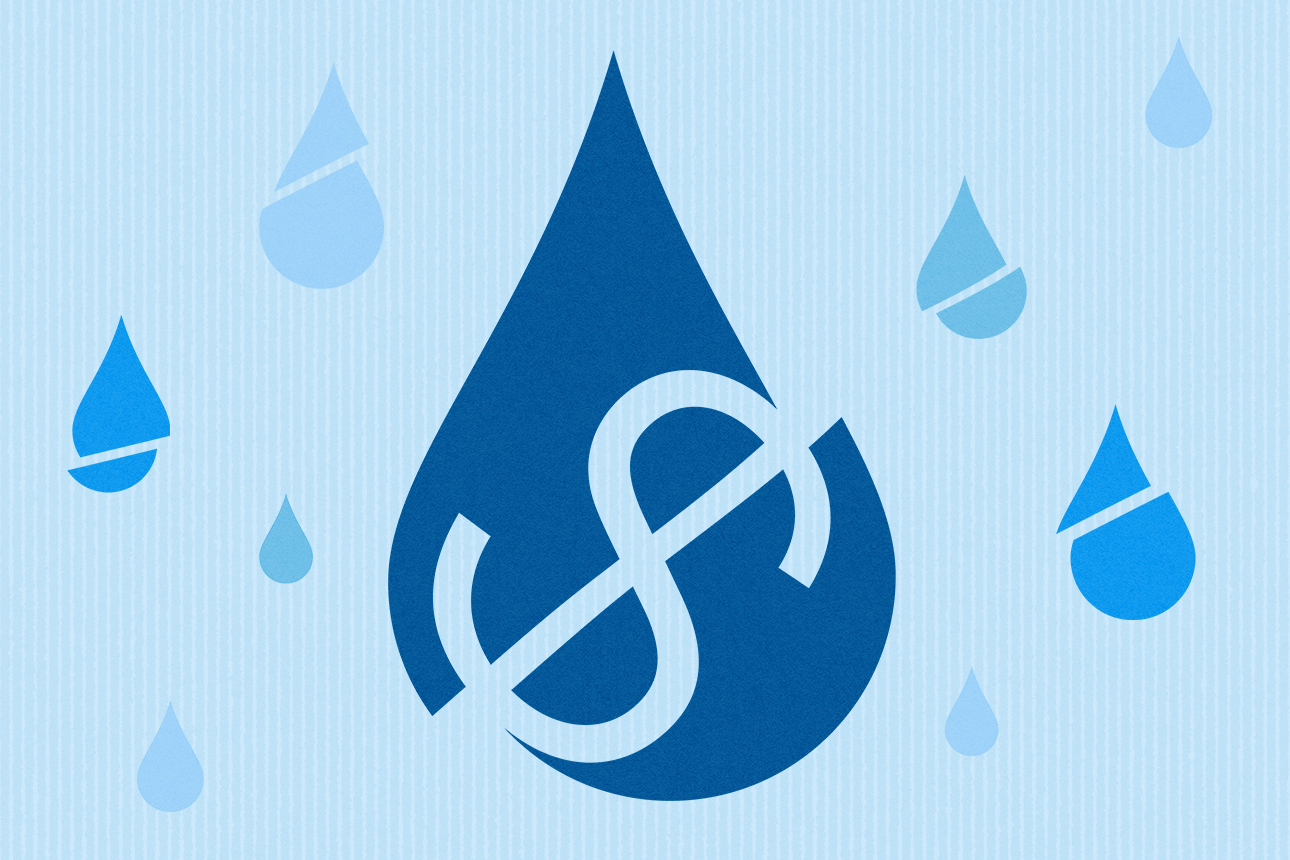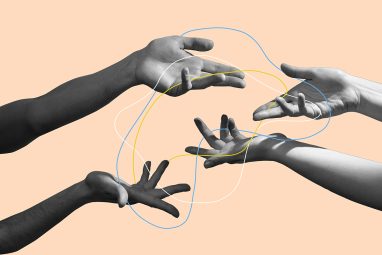How AT&T Employees Turned Process Gripes Into $230 Million Saved
AT&T found a way to help workers kill outdated processes and tools that wasted time, energy, and money — one drop at a time. Here’s how the approach works.
News
- Identity-based Attacks Account for 60% of Leading Cyber Threats, Report Finds
- CERN and Pure Storage Partner to Power Data Innovation in High-Energy Physics
- CyberArk Launches New Machine Identity Security Platform to Protect Cloud Workloads
- Why Cloud Security Is Breaking — And How Leaders Can Fix It
- IBM z17 Mainframe to Power AI Adoption at Scale
- Global GenAI Spending to Hit $644 Billion by 2025, Gartner Projects

Kevin Foley/MIT SMR; Carolyn Geason-Beissel/MIT SMR
An $8 expense — rejected because of a travel policy technicality — led to my own first “raindrop.” That term is unique to AT&T, but the leadership challenge isn’t: A raindrop is an annoying policy, an outdated process, or a tool that’s no longer useful — anything that hinders rather than helps you and your organization move forward. One or two of these may be tedious but bearable; pool enough of them, however, and a day at work can make people feel as if they’re drowning in bureaucracy. Every raindrop wastes time, energy, and/or money.
During the past three and a half years, fixing or getting rid of such raindrops has led to 3.6 million hours saved and helped the company avoid more than $230 million in costs — not a bad return, you might say, from scrutinizing matters as small as an $8 expense.
Given that no one sets out to create bureaucracies and no one wants to work in them, why are they so prevalent? For AT&T, the answer reaches back to 1885, when the company was founded — a time when the U.S. flag had only 38 stars, the lightbulb was new, and Mark Twain had just published Adventures of Huckleberry Finn. Combine that history and the sense of tradition it spawns with a natural caution — AT&T operates in critical, highly regulated industries, like broadband and wireless — and it’s easy to see how systems and policies can accumulate and remain unchallenged for decades.
How Project Raindrops Was Born
Three forces inspired us to act. First, an annual employee survey revealed a deep frustration with the company’s tools, processes, and systems. Then, COVID-19 challenged us to find ways to work differently and more efficiently. Alongside that was a companywide initiative, which I helped lead, to consolidate and update our systems and network, and improve employee and customer tools and experiences, by using fewer but more robust applications, vendors, and servers. Together, that meant that a lot more people at AT&T were finally asking, “Why are we doing this?” Often, the answer was “Because this is how it’s always been done” or “I don’t know, actually.”
That’s how Project Raindrops began in the summer of 2020. A small group of employees came up with the name and volunteered to drive the initiative. I checked in with them every few weeks to see how I could help.
What started with just an email address and a call for submissions quickly took off. We began by inviting employees to submit their ideas. Managers and leaders amplified the invitation in emails, messages, and meetings, which helped generate a pool of ideas for the team to work on.
The first suggestion, for example, led us to rethink and streamline how we give people access to certain systems. The team has since acted on more than 270 crowdsourced suggestions — not only making us more efficient but also creating a shared sense of responsibility for achieving better outcomes. One of the most popular changes was replacing a virtual private network (VPN) system that logged users out throughout the workday. The solution: a VPN that was just as secure but required less-frequent log-ins for employees. Another crowd favorite was no longer requiring employees to document every attendee at certain corporate events and parties, like retirement celebrations or team lunches, when they filed expense reports. Other improvements include automatic approval of any de minimis expense, which obviates the need for supervisor sign-off, and having new badges shipped directly to employees rather than to their managers.
The team running Project Raindrops has grown to six full-time employees within the CTO organization, and the program has a dedicated page on the company intranet. But the basic approach and collaborative nature remain the same: An employee sends in a request. It’s reviewed quickly and then analyzed. Have we already tackled something like this? What would it take to fix the issue? What are the potential savings? Are there any compliance, audit, legal, or security risks? If we go ahead — which we have done in the vast majority of cases — the team collaborates with the employee who submitted the idea along with leaders across the company to agree on a budget and timeline and define a successful outcome.
Employees who have a raindrop “retired” become celebrities. Their names are added to a wall of fame — names that now span practically every department and level of the company. We send a brief chain-of-command email so everyone they report to can celebrate their contribution. Our CEO talks about these improvements with real pride. A popular hashtag in the company is #StopTheFlood.
The Approach: Three Keys to Success
Three simple attributes in particular positioned Project Raindrops for success and will continue to shape our focus. I believe they’re replicable in many other companies and other industries.
1. Informal by design. Many great ideas are stifled by layers of approval and busywork. All you really need to get going is a willingness to ask people for their ideas, listen to what they say, and then empower them to solve problems. There must be a clear sense, from the start, that this is a genuine effort and that suggestions lead to change.
We keep the process as streamlined as possible. There’s a simple initial form to fill out, followed by a live conversation with the submitter. A Project Raindrops intake team must assess whether the idea is a duplicate, legal, possible, etc., before it can advance as an official raindrop. Once deemed official, the idea is assigned to the person on the Raindrop Solutions Team who is the subject matter expert for that area of the business. We’ve empowered that team to design the best solution — whether it involves creating a new capability or eliminating a current roadblock — and to deploy it as rapidly as possible. Executive governance is needed only in the rare case that special funding is required.
The end goal: to keep the project simple — making change friction-free and ensuring that we don’t inadvertently create new raindrops in the process.
2. Driven by employees, for employees. The project went viral at AT&T because it responded to real pet peeves and delivered immediate benefits. That’s what inspired people to participate. It wasn’t leaders placing a demand on employees (“Suggest ways for us to be more efficient”); it wasn’t consultants presenting strategies to streamline. It was an invitation for employees to make their own working lives better and fix things that had been slowing them down or annoying them.
We continue to promote the program internally so that more people, especially new employees, know about it and feel empowered to contribute. So far, we’ve found that the people who submit most ideas tend to be those who have been with AT&T a while. But new employees arrive with a fresh perspective and may see opportunities for improvement even more starkly, and we want to hear from them, too.
3. Supported from the top. Retiring some raindrops has required investments, while other fixes have involved policy changes. The employees who suggest these changes, and the team helping to implement them, need leadership support for those decisions. If, for instance, you suggest adjusting how the company reviews small expenses, you’re going to need resources to build a better solution, such as using AI to detect fraud rather than conducting manual spot checks. Leaders have to make those calls.
Small Quickly Becomes Big
Two lessons in particular stand out from the project thus far. The first is that today’s technology fundamentally changes the scale and speed of a project like this. Recent advances — particularly the leaps in machine learning and artificial intelligence — allow us to imagine what was unimaginable even a year or two ago.
The second lesson is that small quickly becomes big. The compounding, cumulative power of tiny changes is remarkable. Project Raindrops’ results reflect as much: A lot of small drops become a flood, and small process changes can become a business transformation. Ultimately, we want to focus on shifting from “retiring raindrops” to “solving tsunamis” — in other words, looking at areas where these raindrops have pooled and seeing what larger themes and opportunities emerge — and the investments we could make to build on the progress we’ve made.
There’s another aspect to that idea, one that James Clear touches on in Atomic Habits, a book that has remained on the New York Times bestseller list for more than four years. “The more you repeat a behavior, the more you reinforce the identity associated with that behavior,” he writes. “In fact, the word identity was originally derived from the Latin words essentitas, which means being, and identidem, which means repeatedly. Your identity is literally your ‘repeated beingness.”
I’d argue that the most valuable return on Project Raindrops is the hardest to quantify: its effect on how our employees see themselves and our company. You can tell your team members all day long that you value them and want them to excel, but if you waste their time and ignore their ideas, they receive a very different message. Every company today wants to be innovative and creative and employ people who are motivated. What better way to do that than by empowering them to move faster, take ownership of their areas of expertise, and minimize roadblocks so they can focus on achieving great results.





